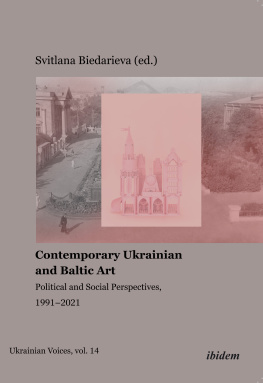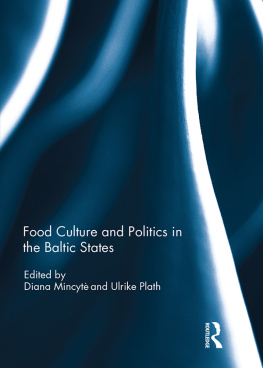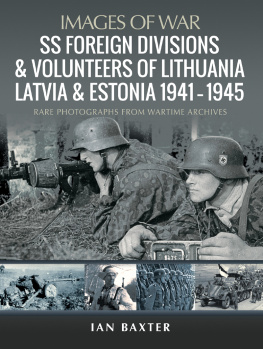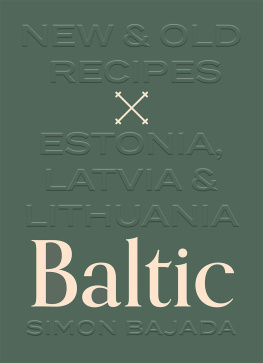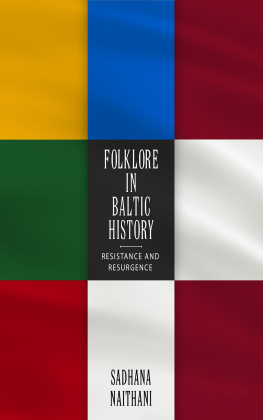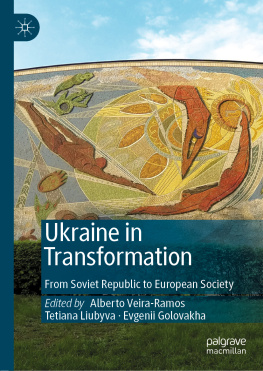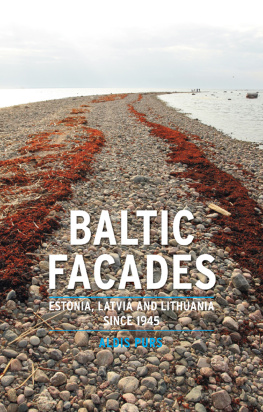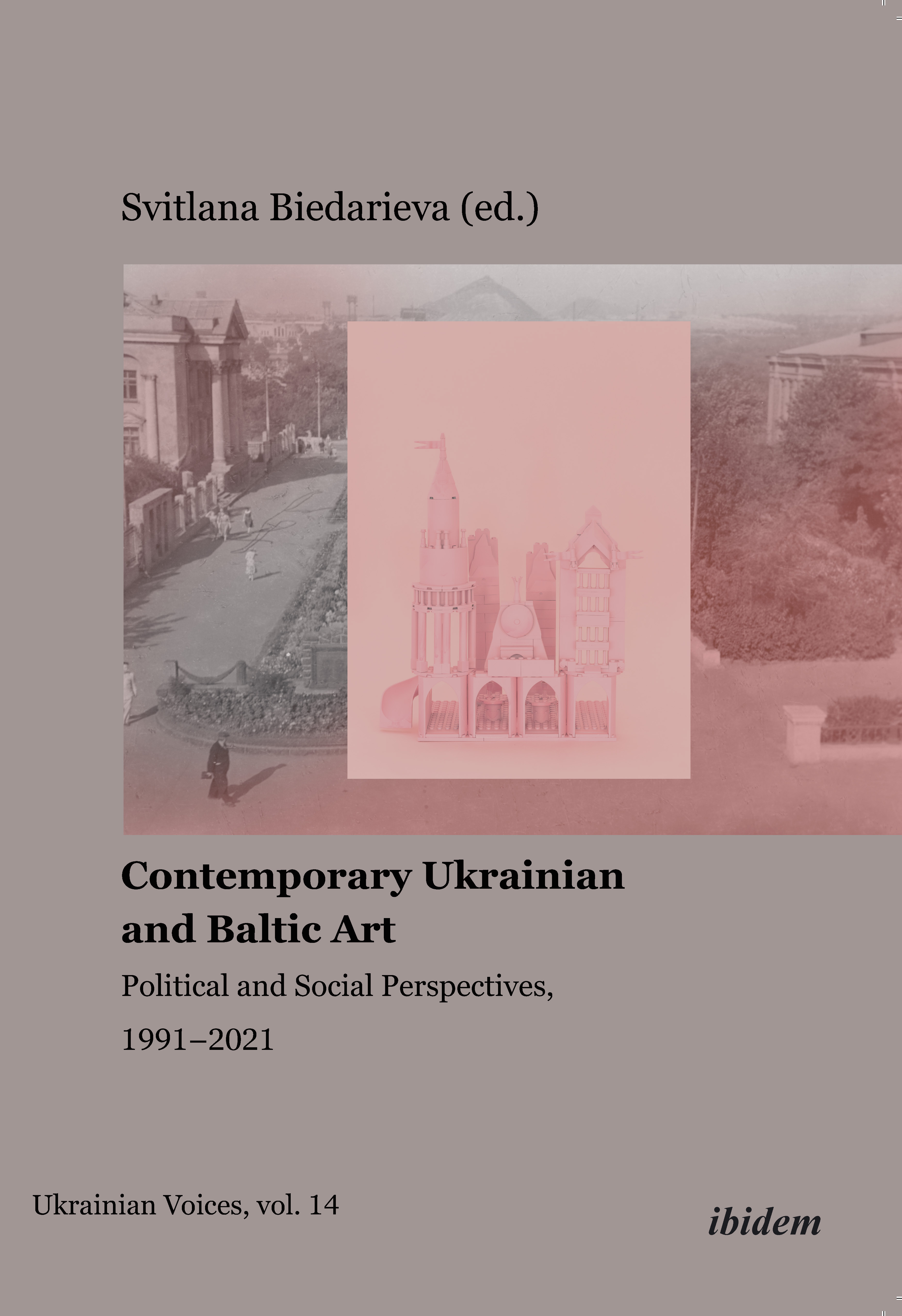ibidem Press, Stuttgart
Contents
Introduction
Svitlana Biedarieva
The current volume is dedicated to a plethora of perspectives elaborated by art researchers and historians from Ukraine and the Baltic countries: Latvia, Lithuania, and Estonia. The book emerged due to the necessity of consolidating and comparing the art in the former Soviet territories once they gained independence following the dissolution of the USSR in 1991. The included texts aim to establish a conceptual pattern to reveal an intertextual network for the development of art in these countries between 1991 and 2021.
As the first collaborative, comparative research effort to discuss contemporary art in Ukraine and the Baltics, the book gathers texts from prominent art historians and curators in the field, who discuss questions of identity, memory, trauma, and social change, as reflected in the art of the last three decades. Consequently, this book represents a comprehensive look at the artistic transformations that took place after independence. It explores how artists reflected on social changes and the modifications of their perspectives after the consolidation of the two worlds divided by the Iron Curtain. However, the scope of this book is not only backward-looking but also interprets the artistic process through a contemporary lens, tracing how societal changes and the new demands of media and mass culture impacted art production.
As a result of their long-term colonization and the subsequent succession of crises, Ukraine and the Baltic region remainif not totally blankan opaque spot on the world art map. However, contemporary Baltic and Ukrainian artistic practices are too complex to be encompassed by a single formula; instead, one can see them through two lenses: of the past and of the present. The first lens is unifying, as it references a shared history, though experienced in different ways; the second lens, less researched, shows us how art responds to current social conditions and the challenges that cultures face. Baltic art and Ukrainian art need more detailed research that would trace their historiography before and after the dissolution of the Soviet Union and establish an interdisciplinary framework of notions and definitions. Consequently, art historians can employ these concepts in discussions of the unofficial and official art practices before 1991 and art reflecting the creation of cultural institutions and artistic groups after the 1990s.
Piotr Piotrowskis famous notion of horizontal art history is particularly useful for synthesizing the analyses presented in this book. (Piotrowski 2012) Specifically, Piotrowski has proposed applying a nonlinear, diffuse, and polyphonic model to the context of local histories, as opposed to hierarchical, vertical art history, which divides the field into centers and peripheries of art production. For example, the art history of Ukraine and the Baltic countries is crafted from the notions and visualities belonging to different ideologies, once suppressed cultural elements, and distorted identities, each proper for its location. The collision of these individual aspects has produced a new cultural reality that is still, on many occasions, uneven. The sedimentation of these elements and their establishment in public culture has been guided by the growth of new institutions and, at the same time, the elaboration of new artistic languages and idioms of art criticism.
In Ukraine and the Baltic states, the pervasive legacy of Soviet methods of art historical research heavily shaped particular forms of discourse regarding the art produced in these countries. The task of the current volume is to challenge such habitual conventions and take a step beyond them in the English-language scholarship on the subject of art in the post-Soviet space. With this aim, the current book assembles a constellation of themes discussed by the contributing authors.
Ieva Astahovska focuses on the Latvian transformation from a nationally-driven post-socialist to a transnationally oriented capitalist society and considers the broader postcolonial entanglements in Baltic art. She discusses the development of Latvian art as an independent phenomenon and reveals the footprints of socialism in the topics covered by contemporary art.
In my text for this volume, I review the documentary turn in recent Ukrainian art, which aims to record and interpret the ever-changing reality of Ukrainian society and to respond to the traumatic events of the past and the present. I explore the primary methods of working with documentary methods in art in the context of the ongoing geopolitical conflict unfolding in the territory of Ukraine.
Kateryna Botanova presents an analytical overview of the main events of Ukrainian art over the last thirty years, including the establishment of independent institutions that supported the creation of a new Ukrainian art scene. She assesses this development through the notion of artist-as-virus, an activist artist who infects the system and fosters its subsequent transformation.
Olena Martynyuk examines apocalyptic visions in the times of uncertainty that defined early post-Soviet Ukrainian art in the 1990s. She discusses how the failure of the Soviet system triggered expectations of renewal and fears of collapse, exploring how Ukrainian artists dealt with the traumatic past through their often phantasmagorical and ahistorical visions.
Lina Michelkevi and Vytautas Michelkeviius engage in a critical approach toward artists interpretations of the process of collecting Lithuanian art and the institutional challenges that such collections face. They compare three dimensions of this process in art projects: the creation of a museum, occasional display of works, and their burial.
Margaret Tali considers the themes of memory and trauma in the Baltic art of the 21 st century. With a focus on spatializing difficult memories, reclaiming minority identities, and zooming in on complicities, she uncovers how contemporary artists narrate the recollections of totalitarian regimes and how the identity politics of the past is reflected and reinterpreted in the present.
Jessica Zychowicz looks in detail at questions of the body, power, gender identity, and emancipation as seen by feminist Ukrainian artists. She highlights the role of socialist visions in the formation of cutting-edge globalized contemporary art practices that merge gender and political criticism while focusing on experiments by artists and activists working on disparate subject-positions and from distinct locations.
The current volume poses several important questions. First of all, is it necessary to unify the perspectives on the art of the countries in question under the post-Soviet label? What other factors might have impacted the clear parallels in Ukrainian and Baltic artistic practices? Throughout this text, the profound intersection between interpretations of independence and the construction of identity is the key to the comparison. For example, in her chapter, Margaret Tali uses an apt metaphor for these constructed identities: Demnikhovs doga two-headed dog who appears to be a helpless victim of a violent surgery rather than a kind of Cerberus, possessing mythical powers. This straightforward, brutal image underscores the search for identity that defined the former Soviet republics, culminating in deformed and kitsch outcomes rather than a clear synthesis. However, art is capable of depicting this violent duality, where the belonging to and the withdrawal from the once common space persist in perpetual competition.
The ways of seeing by Latvian, Lithuanian, Estonian, and Ukrainian artists differ dramatically as they rely on local perspectives in the art that formed over centuries, and these local perspectives are often overlooked when not considering the ways that visual culture was produced and (re)formed throughout the 20 th century. The local archaeology of signification helps uncover these layers of meaning, which accumulated during a time of both repressive cultural politics and the chaotic all-permissive surrogate culture of the 1990s2000s. This clarification is of primary importance for understanding the artistic developments reviewed in this work. Did artists really become free after the divisions between unofficial and official practices were no longer relevant due to the collapse of centralized state control over cultural production? Or is this vision rather idealistic because we can identify the slow drying out of a centralized cultural system that maintained its local roots?

